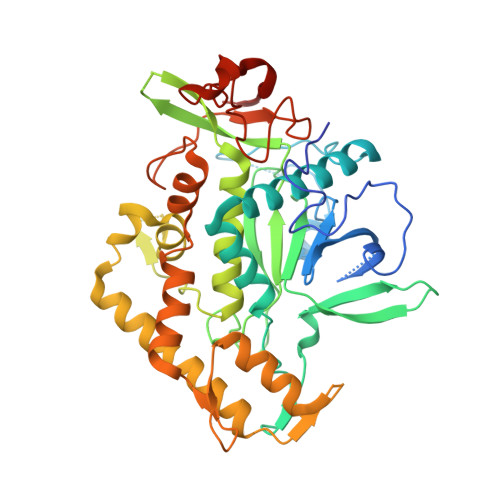Structures of Clostridium botulinum Neurotoxin Serotype A Light Chain Complexed with Small-Molecule Inhibitors Highlight Active-Site Flexibility.
Silvaggi, N.R., Boldt, G.E., Hixon, M.S., Kennedy, J.P., Tzipori, S., Janda, K.D., Allen, K.N.(2007) Chem Biol 14: 533-542
- PubMed: 17524984
- DOI: https://doi.org/10.1016/j.chembiol.2007.03.014
- Primary Citation of Related Structures:
2ILP, 2IMA, 2IMB, 2IMC - PubMed Abstract:
The potential for the use of Clostridial neurotoxins as bioweapons makes the development of small-molecule inhibitors of these deadly toxins a top priority. Recently, screening of a random hydroxamate library identified a small-molecule inhibitor of C. botulinum Neurotoxin Serotype A Light Chain (BoNT/A-LC), 4-chlorocinnamic hydroxamate, a derivative of which has been shown to have in vivo efficacy in mice and no toxicity. We describe the X-ray crystal structures of BoNT/A-LC in complexes with two potent small-molecule inhibitors. The structures of the enzyme with 4-chlorocinnamic hydroxamate or 2,4-dichlorocinnamic hydroxamate bound are compared to the structure of the enzyme complexed with L-arginine hydroxamate, an inhibitor with modest affinity. Taken together, this suite of structures provides surprising insights into the BoNT/A-LC active site, including unexpected conformational flexibility at the S1' site that changes the electrostatic environment of the binding pocket. Information gained from these structures will inform the design and optimization of more effective small-molecule inhibitors of BoNT/A-LC.
Organizational Affiliation:
Department of Physiology and Biophysics, Boston University School of Medicine, Boston, MA 02118, USA.
















